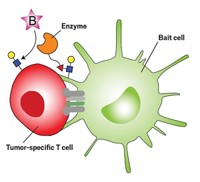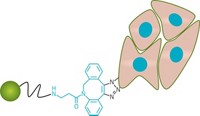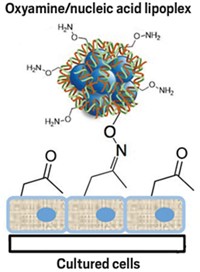Advertisement
Grab your lab coat. Let's get started
Welcome!
Welcome!
Create an account below to get 6 C&EN articles per month, receive newsletters and more - all free.
It seems this is your first time logging in online. Please enter the following information to continue.
As an ACS member you automatically get access to this site. All we need is few more details to create your reading experience.
Not you? Sign in with a different account.
Not you? Sign in with a different account.
ERROR 1
ERROR 1
ERROR 2
ERROR 2
ERROR 2
ERROR 2
ERROR 2
Password and Confirm password must match.
If you have an ACS member number, please enter it here so we can link this account to your membership. (optional)
ERROR 2
ACS values your privacy. By submitting your information, you are gaining access to C&EN and subscribing to our weekly newsletter. We use the information you provide to make your reading experience better, and we will never sell your data to third party members.
Gene Therapy
Genetic engineering through click chemistry
Modifying the cell surface offers a highly efficient method for getting nucleic acids into cells
by Alla Katsnelson
May 31, 2017

Gene therapy and a range of biological research rely on the efficient delivery of nucleic acids into cells through the process known as transfection. Most widely-used transfection approaches for mammalian cells rely on electrostatic forces, usually taking advantage of cationic reagents to bind to negatively-charged nucleic acids and form strong ionic complexes. Cells then grab these complexes and internalize them through a process called endocytosis. However, the concentration of positive charge in the reagents can kill cells, and some cells—such as embryonic cells, neurons, or cells directly isolated from tissue—don’t incorporate the nucleic acids successfully.
Now researchers report a novel transfection technique, SnapFect, that relies on bio-orthogonal molecules—a class of chemically-reactive molecules that don’t interfere with biological systems (ACS Cent. Sci. 2017, DOI: 10.1021/acscentsci.7b00132). The team designed nanoparticle liposomes carrying a bio-orthogonal ligand. When they add those fatty particles to cell culture, they fuse into the cell membrane within seconds, leaving the ketone ligand exposed on the surface. The team then packages the nucleic acids to be delivered in complementary lipid complexes decorated with oxyamines. When the oxyamine particles are added to the cells, these functional groups react quickly with the cell surface ketones. The membrane-bound nucleic-acid complex is then pulled into the cell via endocytosis, and the nucleic acid can be expressed. “It’s not based on electrostatics but on click chemistry,” says Muhammad N. Yousaf, a chemical biologist at York University. “That’s why basically every cell is transfected with the nucleic acid.”
Commercial transfection reagents already bring in about $1.5 billion per year. Yousaf’s team compared SnapFect to two widely-used kits: Lipofectamine (Life Technologies) and ViaFect (Promega). SnapFect transfected cells with a 68% overall efficiency while the other two transfected 19% and 29%, respectively.
Yousaf launched a company called OrganoLinX that this month began selling SnapFect ($350 for 20-25 transfections). “We focused on making [the kit] just as easy to use as other commercial products out there,” he says.
Besides improving efficiency, researchers could also pre-treat one batch of cells to decorate them with ketones and then mix them with other cell types before adding nucleic acids. Just the pre-treated ones will be transfected, Yousaf explains. “It’s like precision transfection.” Because the team can create a variety of complexes using the oxyamine particles, the technique can also deliver other molecules such as proteins into cells.
“I think it’s an interesting step forward,” says James H. Eberwine, a molecular neurobiologist at the University of Pennsylvania—particularly the technique’s universal applicability to DNA, RNA, and proteins, as well as the specificity conferred by the click chemistry approach.
Eberwine adds that while the study compares SnapFect to two widely-used techniques, researchers often optimize those techniques for their particular applications and achieve much higher efficiencies than those noted in this study. “I would certainly try it,” he says, “and if it really does have the higher efficiency then I could see value in doing this.”
Currently cell surface modification with ketones must occur shortly before addition of the oxyamine-bundled cargo. But SnapFect would be especially powerful if the ketone modification was more permanent, Eberwine says. That way, researchers could pre-engineer the surface of immature cells, then allow those cells to develop, migrate, and find their place in the local microenvironment of an experimental system before they get transfected. “This would be a real boon,” he says.





Join the conversation
Contact the reporter
Submit a Letter to the Editor for publication
Engage with us on Twitter